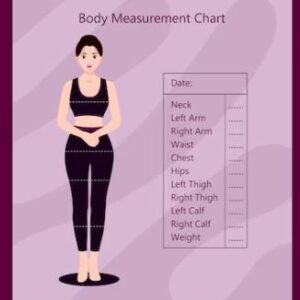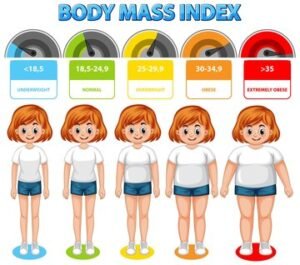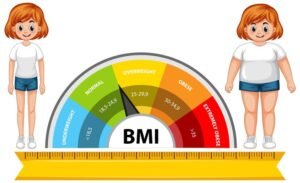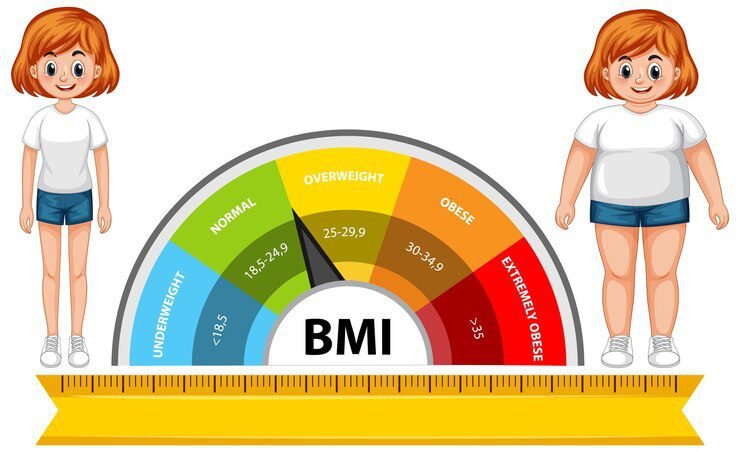Measuring body fat percentage is a key factor in assessing overall health and fitness, yet it’s something that many people overlook or misunderstand. Whether you’re trying to lose weight, gain muscle, or monitor your health, knowing how to measure body fat percentage accurately can provide valuable insights into your fitness progress. However, without proper techniques or tools, you may risk obtaining misleading data. So, how to measure body fat percentage correctly becomes essential to avoid confusion and setbacks in your health journey.
In this article, we will explore the various methods available for measuring body fat percentage, discuss their advantages and drawbacks, and explain how to achieve the most accurate results to ensure you are tracking the right metrics.

Understanding Body Fat Percentage
Before diving into how to measure body fat percentage, it’s important to understand what body fat percentage is and why it matters. Body fat percentage refers to the proportion of your total body weight that is made up of fat. Unlike simple body weight or BMI (Body Mass Index), body fat percentage provides a more accurate picture of your overall health by distinguishing between lean mass (muscles, bones, etc.) and fat.
For most adults, a healthy body fat percentage varies by gender:
- For women, a healthy body fat percentage is generally between 21% and 33%.
- For men, a healthy body fat percentage ranges from 8% to 24%.
Understanding how to measure body fat percentage accurately is vital for knowing whether your body fat levels fall within a healthy range, or if they might indicate the need for lifestyle changes.
1. Skinfold Calipers: A Low-Cost Option, But Accuracy Varies
One of the most accessible and affordable methods for measuring body fat percentage is the use of skinfold calipers. This method involves pinching specific areas of your body (like the triceps, abdomen, or thighs) to measure the thickness of skin folds. These measurements are then used in formulas to estimate your body fat percentage.
Pros of skinfold calipers:
- Inexpensive and easy to use
- Can be done at home with proper training
Cons of skinfold calipers:
- Accuracy depends heavily on the skill of the person doing the measurement
- Can be difficult to perform consistently without practice
- Results may vary based on the quality of the calipers used
If you choose this method, it’s important to learn how to measure body fat percentage properly to avoid misleading data. Using the wrong sites or improper techniques can lead to inaccurate readings. If you’re unsure about using calipers yourself, you might consider having a professional do the measurements to improve reliability.
2. Bioelectrical Impedance Scales: Convenient but Can Be Inconsistent
Another common method for measuring body fat percentage is using a bioelectrical impedance scale. This device sends a small electrical current through the body and measures the resistance to flow. Because fat is less conductive than lean mass, the scale estimates body fat percentage based on the resistance encountered.
Pros of bioelectrical impedance scales:
- Convenient and easy to use at home
- Provides a quick result
- Often included in smart scales that track other metrics (e.g., weight, muscle mass)
Cons of bioelectrical impedance scales:
- Results can be inaccurate if not used properly (hydration levels, meal timing, etc. can affect readings)
- Can give misleading data, especially if used inconsistently
- Not as precise as other methods like DEXA or hydrostatic weighing
While bioelectrical impedance scales are handy, they can sometimes provide misleading data. To ensure more accurate results, it’s important to follow the manufacturer’s guidelines carefully, and to measure your body fat percentage at the same time each day, ideally in a consistent hydration state.
3. Dual-Energy X-ray Absorptiometry (DEXA): The Gold Standard
When it comes to how to measure body fat percentage with the highest accuracy, Dual-Energy X-ray Absorptiometry (DEXA) is considered the gold standard. DEXA scans use low-dose X-rays to measure bone density and body fat percentage, providing highly detailed and precise data on the distribution of fat in your body.
Pros of DEXA:
- Very accurate and precise, providing detailed body composition data
- Measures fat distribution (subcutaneous vs. visceral fat)
- Can be useful for tracking changes in body fat over time

Cons of DEXA:
- Expensive and typically requires a visit to a medical or fitness facility
- Not as accessible as other methods like calipers or bioelectrical impedance
- Involves radiation exposure (though minimal)
Although how to measure body fat percentage using DEXA is the most reliable method, it may not be accessible for everyone due to cost and availability. However, if you have the opportunity, DEXA can provide the most accurate insight into your body composition.
4. Hydrostatic Weighing: Accurate but Inconvenient
Hydrostatic weighing, also known as underwater weighing, is another highly accurate method for measuring body fat percentage. It involves submerging your body in water and measuring the amount of water displaced. This method calculates body density, which can then be used to estimate body fat percentage.
Pros of hydrostatic weighing:
- Highly accurate when performed correctly
- Provides detailed body fat measurements
Cons of hydrostatic weighing:
- Requires specialized equipment and a water tank
- Can be uncomfortable for some people
- Not widely available
While how to measure body fat percentage using hydrostatic weighing provides excellent results, it’s not as accessible as other methods like skinfold calipers or bioelectrical impedance. This makes it less practical for everyday use, though it can be a great option for those seeking the most accurate readings available.
5. Circumference Measurements: A Simple Alternative
If you’re looking for a low-tech, inexpensive method for estimating body fat percentage, circumference measurements may be a useful tool. By measuring key areas of your body (such as the waist, hips, and neck), you can use specific formulas to estimate your body fat percentage.
Pros of circumference measurements:
- Inexpensive and easy to perform
- Can be done at home
- Provides a general idea of body fat trends
Cons of circumference measurements:
- Less precise than other methods like DEXA or hydrostatic weighing
- Results can be influenced by factors like muscle mass or water retention
While circumference measurements are simple and cost-effective, they offer less precision compared to more advanced methods. It’s essential to understand how to measure body fat percentage using this method will give only a rough estimate.

Conclusion: Achieving Accurate Results or Risk Misleading Data?
When learning how to measure body fat percentage, the key is to choose the right method for your needs and goals. While some techniques, like DEXA scans or hydrostatic weighing, offer the most precise data, they may not be accessible to everyone. Methods like bioelectrical impedance scales or skinfold calipers are more affordable and convenient, but they require careful execution to avoid misleading results.
To get the most accurate measure, it’s recommended to use multiple methods and track your body fat percentage over time rather than relying on a single measurement. How to measure body fat percentage depends on your goals—whether you are tracking progress, improving fitness, or assessing overall health. With the right approach, you can ensure your data is accurate and truly reflects your body composition.




